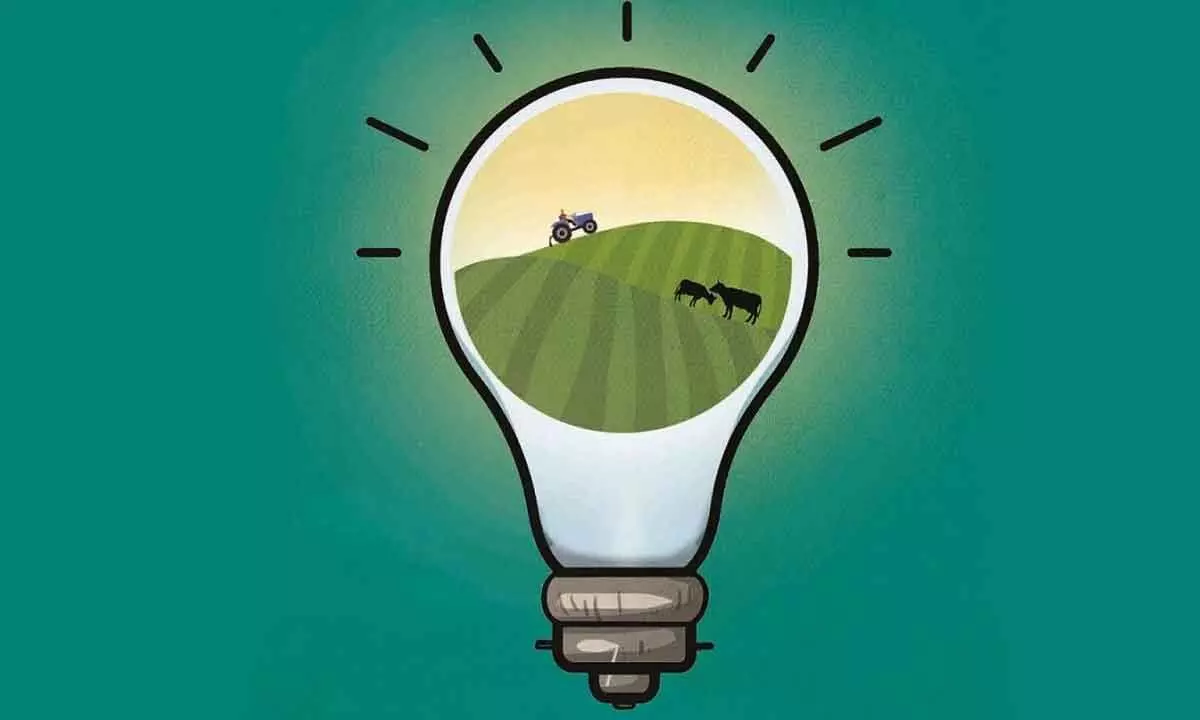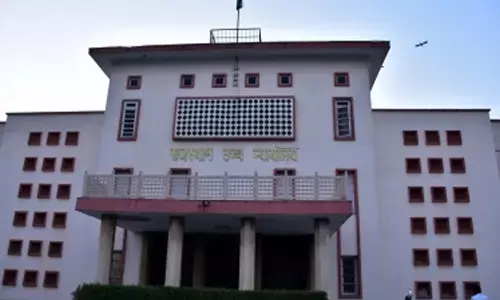Remodel Food Systems

The climate change crisis is human-made; it is we humans who must rework our lives; we cannot go ahead with the current model of agriculture in a climate-risked world
With climate change in mind, there is a growing discussion on the need to re-engineer the current model of agriculture and the food we consume.
Agriculture today contributes to greenhouse gas emissions in a variety of ways — through methane emissions from rice cultivation and livestock and through nitrous oxide from the use of synthetic fertilisers and manure on fields.
The large-scale clearing of forests, including rainforests, to produce beef cattle and even palm oil adds to the crisis of our climate-risked world. Then, there is the multi-continent transport for food processing and sale. Not to mention that the sector itself is highly vulnerable to the increased frequency and intensity of extreme weather events. What, then, should be the transition plan?
This is where farms and food of our world — countries like India — provide answers. We have, as yet, in most parts not moved to an input-intensive model of livestock production. Most dairy farmers are still individuals, using combinations of open and stallfeeding for their animals. Their farms are based on agrosilvopastoral systems.
But this is changing fast. Farmers are increasingly using expensive inputs — from fertilisers to seeds to pesticides. This adds to their debt burden, making them even more vulnerable to crop losses and extreme weather impacts.
So, the elements of the agricultural model for livelihood-nutrition-nature security in our climate-risked world are as follows.
First, it has to be a low-input-based model that protects the farmer from multiple risks. This will also put more money in the hands of farmers, particularly as we know that the high cost of food is unaffordable in most countries. It is clear that low-input agriculture is not necessarily lower in productivity. The conventional strategy — even what is being promoted in the name of smart agriculture — depends on high-cost inputs, which add to the cost of cultivation.
The argument is that this strategy will lead to higher yields, which will give the farmer higher income. But this works only if the costs do not wipe out the profits.
In the case of smallholder farmers, where there are little economies of scale, this is just not possible. Increasing yields will, however, require working on the health of the soil and providing irrigation to farmers when they need it most.
Climate change will also bring new pests — this makes it all the more important for agriculture to be resilient, but this does not mean increasing the use of pesticides. It can and must mean changes in the practices of agriculture as well as the use of non-chemical alternatives.
The bottom line is that climate resilience requires more ability to cope, recover, and ultimately put higher returns in the hands of farmers. This also means investing in markets that will provide opportunities for farmers to maximise gains.
Second, agriculture has to be built on the principle of risk minimisation. This would mean promoting multiple cropping systems. This will also promote biodiversity as farmers would grow more than one crop on the field. Livestock economy has to be made integral as it would allow for management of risk so that there is income from different sources. Think of it like the diversification of investment portfolios, which bankers would advise you in these times of uncertainty.
Third is the choice of crops that are both nutritive and compatible with the local environment. In other words, where there is water shortage, farmers should grow water prudent crops like millets.
But this choice is not in the hands of the farmer. Governments must enable policies — from procurement to price — to promote growing of these crops. For instance, more biodiverse and climate-appropriate millets will be grown by farmers where governments have included them in schemes such as mid-day meals (this is one of India’s most important programmes as it aims to provide hot-cooked food in every school of the country). Change of cropping patterns towards climate-resilience will need this supportive structure.
The fourth, and the most critical, element is that the choice of food that farmers grow is in the hands of consumers — us; what we eat; and why we eat it. If we change our diets, it provides signals to the farmer to grow differently. We know that food is medicine; yet we continue to eat wrong; eat junk. The food on our plates has lost the meaning of nutrition. We are in danger of losing the knowledge of good food — what our grand-mothers and mothers cooked in different seasons.
This is why we must be part of this changed agriculture story. Food cuisines are about culture and biodiversity. The climate change crisis is human-made; it is we humans who have contributed to the emissions that threaten our present, and the very existence of our children’s future. It is we who must rework our lives; our ways of doing business. The fact is that we cannot go ahead with this model of agriculture in a climate-risked world.
(Courtesy: Down To Earth; (Writer is Director General of CSE and Editor of Down To Earth, an environmentalist who pushes for changes in policies, practices and mindsets)

















